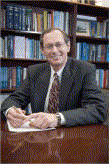

The annual United States PIM conference this year boasted a trinity of events. The three-day PIM 2009 conference, split evenly between the international conference on powder injection moulding, and the workshop on the medical applications of micro powder injection moulding, was preceded by a day long tutorial in PIM technology
Industry luminary, Randall German, associate Dean of Engineering at San Diego State University, stepped in to present the tutorial, taking the place of Howard Sanderow, former president of Management and Engineering Technologies, who died earlier this year. The seminar provided a comprehensive overview of PIM, as German discussed manufacturing processes, before touching on production facilities, materials selection, innovations and the growth of the industry. The achievable complexities of PIM parts were showcased while the economic and technological advantages were reviewed.
The international conference on PIM, sponsored by the Metal Powder Industries Federation (MPIF), began with global reports on the MIM status. President of the Metal Injection Moulding Association (MIMA), Matt Bulger, covered North America, reporting that 93 per cent of MIMA members surveyed in 2008 believed that sales would increase over the following year, while the remaining 7 per cent expected results to remain the same. Fifty seven per cent anticipated an increase in workforce, illustrating, according to Bulger that “you need the skills and the trained personnel to prepare for growth.
Seventy nine per cent of the respondents believed their manufacturing operations and technology were competitive with the industry as a whole, while 14 per cent thought their own to be world class. The remaining 7 per cent declared their operations were good, but admitted there was room for improvement. These results, said Bulger, showed that “for the most part, people were competing on a level playing field”.
The top factors presenting a significant challenge to business, according to the report, were the cost of energy and materials and the availability of skilled labour, indicating to Bulger that there is “not a large pool of MIM process technology workers out there”. “Sixty-four per cent of respondents did not believe that investment is adequate to realise future product improvements in a three to five year time frame.
The general view was that despite the downturn in the world economy, MIMA members had so far been spared the worst, and the current capability of MIM parts makers has applications that remain to be exploited. The Japanese report, prepared in October 2008 and based largely on a 2007 market investigation, showed the MIM market size in the second half of 2008 to be less than ideal. Junichi Hayashi, general manager of Epson Atmix Corporation, affirmed that there was “lots of confusion right now” but believed there was some hope to be found in automobile parts. Stainless steel took 55 per cent of the Japanese market in 2007, with Iron-Nickel base material following at 24.3 per cent.
Martin Kearns of Sandvik Osprey delivered the European report on PIM. In 2007, the automotive industry accounted for almost half of the total tonnage of metal powder consumed in Europe. Kearns maintained that it was likely that similar or better figures will have been realised in 2008 with the year seeing “continued growth”. Kearns reported that of CIM and MIM parts makers, around 38 per cent were quite optimistic about sales in the following six months, while 37 per cent were not very optimistic. Only 14 per cent were very optimistic. Just over 30 per cent of these respondents anticipated staff reductions in 2009. Kearns discussed the opportunities to be found in the medical/dental area and general engineering.
The PIM conference also included presentations on the rheological behaviour in PIM, simulation and micromachining, while keynote speaker David Danitz of Novare Surgical Systems explained how MIM is being used in novel surgical techniques that are allowing for major operations to be performed, apparently without visible scars. The afternoon brought a batch of presentations in the lead up to the evening's exhibition and networking session which included displays from BASF Corporation, Polymer-Chemie and Abott Furnace Company.
The MIM workshop was intended by organisers German and Young-Sam Kwon of Korea's CetaTech Inc. to provide an arena designed to spark discussion and debate over the ideas and theories propounded in the presentations. Kicking off with an assessment of technical and marketing barriers, a string of diverse talks ensued dipping frequently into dental applications of PIM - with some highly graphic images of dental operations – largely explained by representatives of the Seoul National University's Dental School. Other subjects touched on were those on nano- scale powders, refractory metals and simulations.
The workshop threw one curveball with biologist Giselle Thibaudeau of Mississippi State University delivering a fascinating talk on the lessons to be learned from nanostructures supplied by nature, in which she discussed, amongst other curiosities, small scale structures that generate colour, tadpole teeth and invisibility. The keynote speaker for the first evening of the workshop also took a biotech slant on things. He was James F Shackelford, professor at the University of California who offered an insight into on bioceramics, biophotonics and the potential for micro PIM fabrication of medical devices and reported “a renaissance” of interest in bioceramics and saw potential for micro-PIM in the field. Jai-Sung Lee of Korea Hanyang University took the next day's keynote speech and discussed nanopowder agglomerate sintering, a new process designed for the consolidation of nanoscale powders, based on case studies following previous methods which had resulted in incomplete densification.


